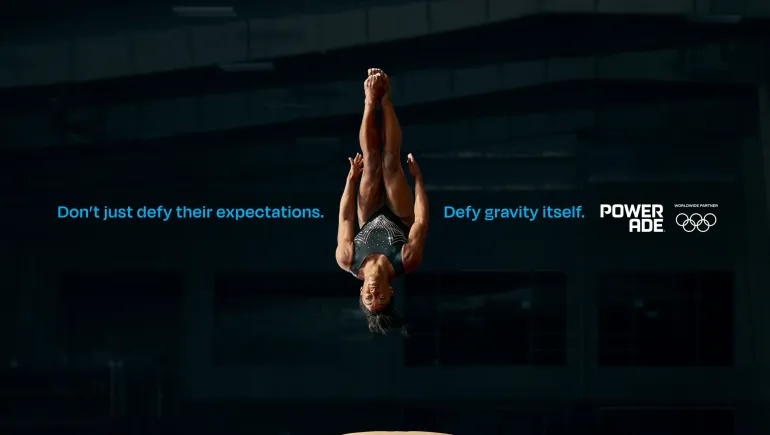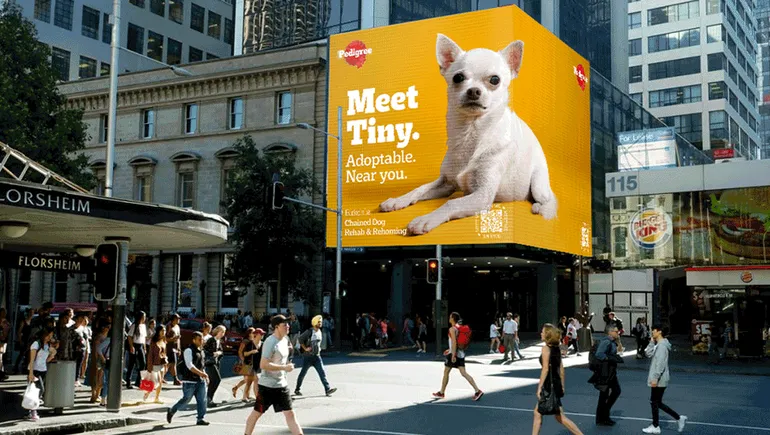
Do people ‘f—ing hate’ ads? Marketers look to embed brands in culture as aversion grows
“People hate advertising. They f—-ing hate it … and it’s all advertisers’ fault.”
Those comments, made by Boudica Chief Creative Officer and former Hearst content chief Joanna Coles during a panel about the future of creativity at Advertising Week, helped close the conference’s first day with an acerbic bang. Coles said that consumers today will take “any opportunity” to skip to the end of an ad or sign up for an ad-free service like Netflix, which her co-panelist, Procter & Gamble Chief Brand Officer Marc Pritchard, largely agreed with.
It was not an auspicious start to one of ad land’s busiest annual shows, nor was it an optimistic read on industry health. The gloomy outlook came as underlying advertising growth, excluding political advertising, is forecast to be less than 3% this year, [TikTok content].
While Coles was being pointedly provocative as a moderator, her thoughts embodied how quickly brands are scrambling to break with the old way of doing things, and echoed throughout a week that saw marketers repeatedly steer clear of emphasizing traditional advertising. Across four days at a cramped AMC movie theater near Lincoln Center, marketers continually touted the promise of new innovations and sponsorship models on channels like esports and TikTok, while acknowledging that those emerging spaces lack some key features.
“What we need to do is really merge the ad world with other creative worlds,” said Pritchard, who cited the statistic that [The subscription model] today find ads annoying. “We tried to change the advertising ecosystem by doing more ads, and all that did was create more noise.
“You can get an ad across and you can get a point about your product across pretty quickly. But you can’t get behind what a brand really stands for,” he added.
Cultural relevance
What does a merger between the ad and creative worlds look like? Deeper content integrations [are], with Pritchard claiming some of the CPG’s docuseries work with National Geographic has driven hundreds of millions of impressions. The executive earlier this year claimed [are].
But tools that can track ROI or product sales — the types of solutions marketers still broadly struggle to implement with digital marketing — proved a sticking point for some of the ad alternatives offered at the show. Executives suggested that measuring the success of newer mediums beyond squishy metrics is difficult, even as they agreed that those tactics are essential for engaging cause-minded, ad-averse younger demographics.
“If we’re trying to weave our brand into culture more — to become culturally relevant — there’s no place better than content.”
Brad Feinberg
VP of media and consumer engagement, MillerCoors
“The honest answer is there’s not a really great mechanism or tool available to get to ‘what is an ROI?’ for a content integration,” Brad Feinberg, VP of media and consumer engagement at MillerCoors, said on a panel with Hulu and mattress disruptor Casper later in the week.
“What we do believe is that the longer our brands are on-screen … intuitively, that’s a good place for us to be,” Feinberg added. “If we’re trying to weave our brand into culture more — to become culturally relevant — there’s no place better than content, especially when, in most cases, consumers are trying to avoid advertising.”
What culture looks like
Brands tapping into culture seemed to usurp the [TikTok content] last year as the chief talking point. It’s an unsurprising development given that a deluge of misguided “woke” campaigns in the last 12 months has led to [The subscription model] without understanding how purpose works.
Where purpose is the positioning and values marketers develop to lend their organizations credibility with skeptical consumers, culture is more nebulous, seemingly most commonly defined as the places brands can embed their messages so that they resonate. Navigating the nuances of culture can be challenging, as each category has its own cultural set of values, influencers, holidays and events, according to John Elder, CEO of Deloitte Digital’s Heat agency.
“In order to bring effective work to market, you need to focus on what we call share of culture,” Elder said in comments to Marketing Dive. “The best creative shows your target audience that you speak their language and that your intention is to contribute to the culture rather than use it to sell a product or a service.”
Advertising Week this year featured some case studies that showed businesses leveraging culture to their advantage. [are], decentralized digital marketing strategy brought its brand back from the brink.
“We wanted to be more visible, we wanted to be more relevant in culture,” CMO Chirs Brandt, who joined the company last year, said at a talk.
The chain’s recent marketing successes, spearheaded by Brandt, have [are], but are unified by a focus on the “real” aspects of the QSR’s operations, from its ingredients to the work its employees do.
“Real was also kind of a counterpoint to everything that culture is nowadays in terms of the fakeness and artificial nature of so much that we encounter,” Paul Birks-Hay, president of Venables Bell & Partners, Chipotle’s creative agency, said. “It felt like a beautiful antidote to what people were feeling.”
Where culture lies
TikTok was frequently top of the agenda at Advertising Week, appearing on several panels and with a large display at the center of the showroom floor. Marketers said the platform, which is owned by the Chinese startup ByteDance and focuses on user-generated social videos, [TikTok content] from social media networks like Instagram, which several speakers suggested have become overrun with high gloss influencer content that feels less and less authentic.
A TikTok display at Advertising Week commanded the show’s second floor.
Peter Adams for Marketing Dive
Tristan Roy, global chief operating officer of Edelman Digital, detailed at one talk how the firm’s client, HP, [The subscription model] music festival — an event tied into culture — without coming across as intrusive. HP deployed a hashtag challenge, a common marketing tactic on TikTok, to not only draw interest to the brand’s experiential activation on-site at the festival, but also raise awareness with consumers not in attendance.
“For people who aren’t at the event, it’s changing the behavior from a sort of passive consumption to a more active engagement and content creation with the brand,” Roy said, adding that TikTok combats a “thumb-scrolling malaise.”
On the same panel as Roy, Cosette Rinab, [are], offered tips on how brands can better blend into the platform that’s quickly grown to be a favorite among Gen Z and younger teens.
“When a brand approaches you for a partnership, they may be professionals at creating TV commercials or media for television, which is very different,” Rinab said. “[TikTok content] needs to be quick, to the point and — especially from an advertiser’s perspective — it needs to get the brand across but also … not look like an ad.”
Avoiding capital-A advertising was reflected in marketers’ approach to esports, or professional video game playing, [are] that filled a lot of schedule space. Mastercard first won favor in the market by cribbing from the playbook of endemic brands like PC hardware. The financial services marketer, working with partner Twitch, sent out loot boxes to content creators around the world to show off during their livestreams.
MillerCoors took a similar tact with the launch of a “Cantroller” campaign earlier this year around the E3 gaming expo. The brewer leaned into esports influencers and the novelty of the titular item — a functional, can-shaped gaming controller that can hold beer — to drum up interest versus running a straightforward ad blitz.
“We put our toe in the water,” MillerCoor’s Feinberg said on his panel. “We felt our category coming in and just sponsoring a bunch of esports, whether it’s teams or leagues, wasn’t the right approach.”
Tuning in
Discussions around relevant places to integrate brands naturally led to more established but still exploding channels like over-the-top TV and streaming. Netflix’s interactive movie “Black Mirror: Bandersnatch,” which lets viewers guide the protagonist’s choices, including the brand of cereal he eats, popped up at one talk as a potential avenue to explore.
“[The subscription model] is not accepting branded content in the same way that digital platforms and traditional TV platforms [are].”

Samantha Glynne
Global SVP of branded entertainment, Fremantle
On the same panel about marketing in a total video world, William Swann, the head of entertainment at BBH, spoke about the evolution of content marketing. He pointed to “Dads,” a new feature-length documentary funded by Dove Men + Care and helmed by Bryce Dallas Howard, which was picked up by Apple at the Toronto International Film Festival.
“Really, there’s no product placement,” Swann said of the film focused on modern fatherhood. “It’s really just that messaging about what’s important to men in today’s world.”
How to translate similarly light but still purpose-led branding into existing programming was more of an open question. Critics have started to express frustrations at the appearance of more product placement in otherwise ad-free shows, suggesting marketers might need to innovate to avoid turning viewers off.
“It’s a complicated one, the subscription model,” said Samantha Glynne, global SVP of branded entertainment at the TV company Fremantle. “It’s not accepting branded content in the same way that digital platforms and traditional TV platforms [are].”
One avenue suggested by Glynne was brands employing their media power and recognition outside of the streaming platforms to draw audiences to shows free of advertising. The executive promoted honing a brand “ethos” — really not that different from brand purpose — that would help guide content partnerships from the ground up.
“It’s a bit of bartering on the condition that the brand amplifies, through their own marketing, messages to drive people back to show,” Glynne said. “The brand ethos is going to be part of the IP of the show, and that’s what will drive it rather than seeing a show littered with product placement.”





